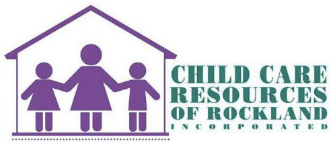Biting is a very common but challenging infant and toddler behavior. For parents and caregivers it can ultimately lead to frustration, anger, and even embarrassment. To effectively address this behavior, avoid calling or thinking of the child as a biter. Labeling a child can lead to them taking on the identity and can potentially intensify the behavior rather than minimize or eliminate it.
An infant may bite due to a few different reasons. Sensory exploration plays a huge part in infant development. Infants explore the world around them through their senses, especially by mouthing objects. Strong emotions such as frustration, fear, anger, excitement, or a sense of feeling overwhelmed can also lead to biting. Infants begin teething at around five months old; biting on an object or sometimes other individuals, can help relieve pressure and ease the discomfort associated with teething.
There are many reasons why a toddler might begin to bite. Similar to infants, toddlers can feel overwhelmed, have a need for oral stimulation, or are teething. A huge factor to take into consideration is language; toddlers lack the necessary language skills to express important needs or desires. Biting can be a substitute message they can’t yet express in words such as: I’m mad. I’m so excited. You’re too close to me. I want to play with you. Toddlers also may be experimenting with cause and effect or imitating what they see.
As you observe children play, you may be able to anticipate when biting might occur. There are many signs a child might be on the verge of biting. To help assist in identifying these signs, ask yourself, “What was the child doing before the bite occurred? Who was bit, the same child or a different child? Who were they playing with? Where was the child playing? What time did the incident occur?” In documenting this information it’s possible to potentially find a pattern. When dealing with a bite you need to act quickly and directly. You want your words and actions to convey the strong message biting is not okay; biting hurts. Shifting your attention to the child who was bitten clearly communicates that biting does not result in more attention and also helps to teach empathy. Try redirecting the child that bit to another activity such as reading books, playing puzzles, or with other toys. The goal is to reduce the tension and shift the child’s attention to another task. With toddlers you can suggest how the situation could have been handled differently by providing the language for them. Over time parents and caregivers can reinforce no biting by being vigilant; documenting; looking for patterns or clues; using positive reinforcement instead of negative reinforcement; and, whenever possible, trying to predict and prevent a child from biting.
Resources
Kinnell, G. (2008) No Biting: Policy and Practice for Toddler Programs, Second Edition. Red Leaf Press St. Paul: MN.
Why Do Toddlers Bite: Finding the Right Response (2016) https://www.zerotothree.org/resources/232-toddlers-and-biting-finding-the-right-response



